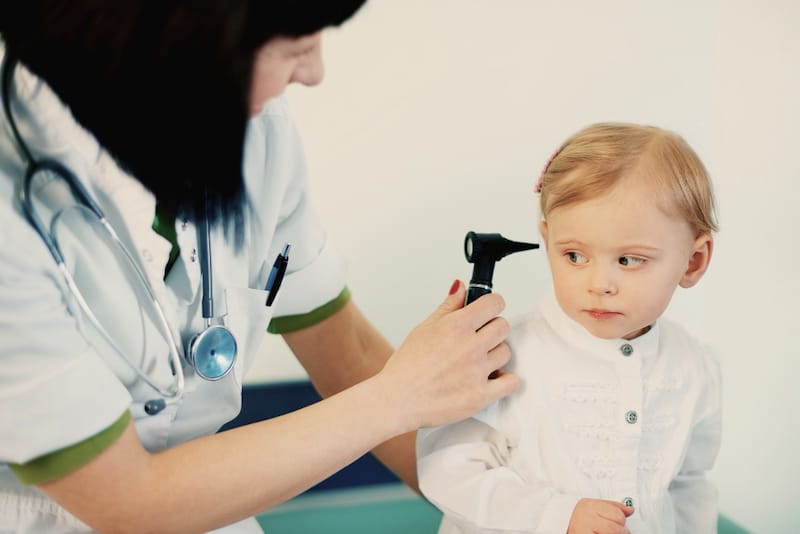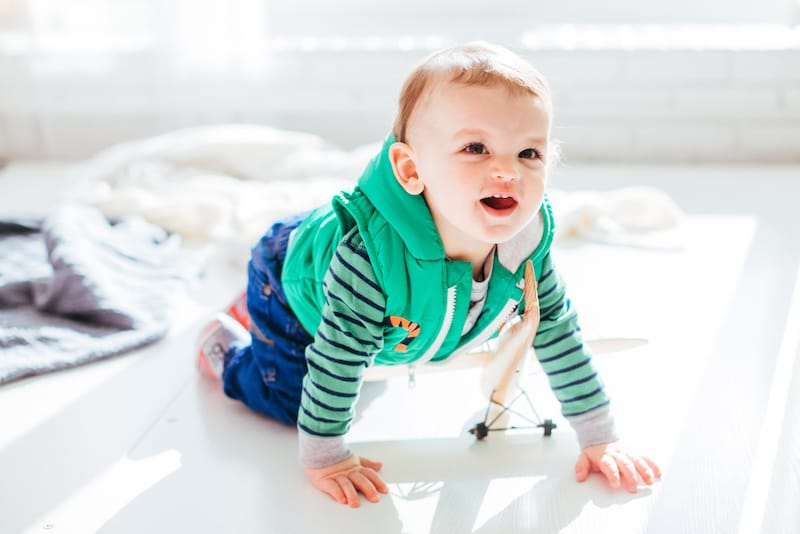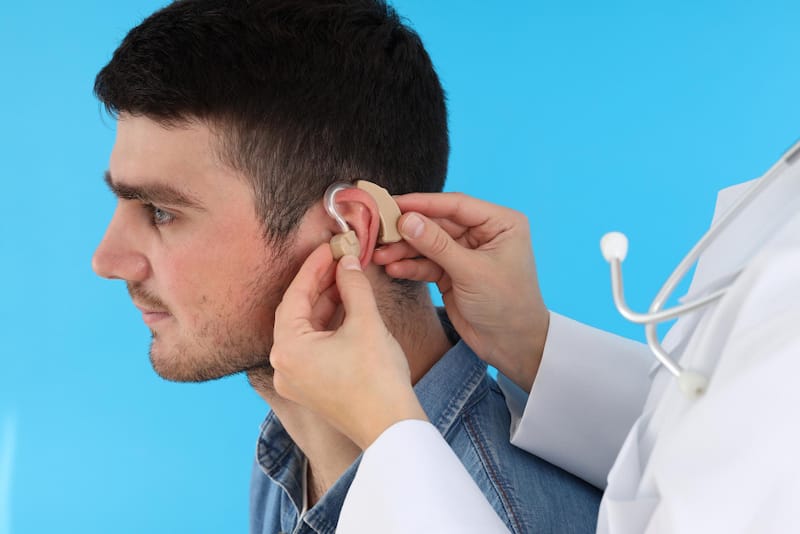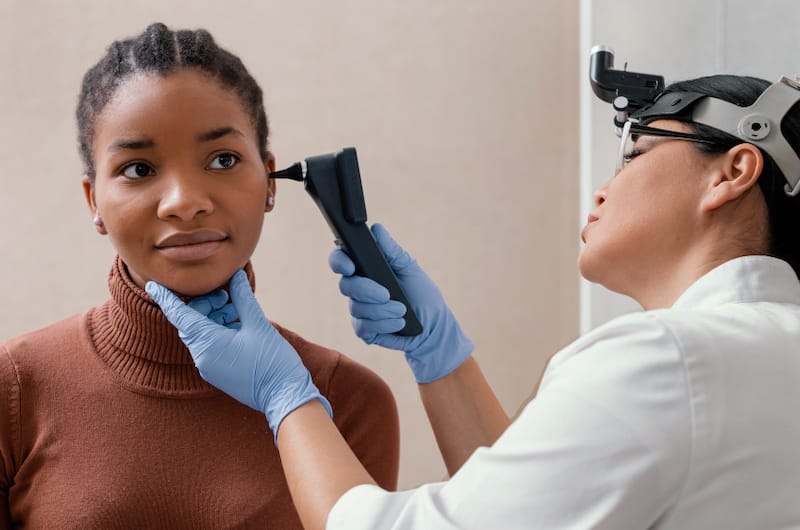While the external appearance of a baby’s ear is already shaped at birth itself, the gradual improvement of hearing might take months. The structural formation of the middle ear on the other hand would take approximately 10 years. Since a child’s ears are most sensitive at the age of a toddler and young child, we must take precautionary steps like fitting earplugs or earmuffs on them when they’re engaged in loud activities. You’ll also need to provide attention to signs of hearing loss at a young age, which can be predicted by behavior patterns like delayed speech and turning up TV volumes way too high. When it comes to old age, hearing loss happens for different reasons as our body gives in and the middle ear starts degenerating.
The human ear is made of 3 different structures that function collectively for us to be able to hear sounds.
The outer ear, the middle ear, and the inner ear cooperate and depend on each other. For instance, while the outer ear funnels sound from the environment to the ear canal, the middle ear converts sound waves into vibrations, and finally, such vibrations process into the form of nerve signals in the inner ear.
As we grow up from being a baby into full-blown adults, there might be structural changes in our ears, which will be the highlight of this article.
How do a newborn baby’s ear and hearing develop? What can you do to protect a young child’s ears and hearing?
How does the progression of the ear from birth to adulthood happen? How do you know if your toddler or child has hearing loss? What happens to our ears as we grow old?
The growth of a baby’s ear and hearing

When a baby is born, the inner ear will be already developed similar to an adult ear. However, the middle ear would still be filled with fluid that would impact the hearing of a newborn.
So, newborns may not be able to respond to sounds at first unless they are loud voices or high-pitched sounds.
This doesn’t mean that the baby will be completely unaware of his surroundings. The baby surely can respond to sounds, music, and sudden noises.
You might even notice a baby paying close attention to a conversation happening right in front of them.
The ages at which a baby’s hearing will develop as they grow up into a young child with time is shown in the below table
| Age | Hearing capacity of the ear |
|---|---|
| 2 months | Your baby will directly respond to a familiar voice |
| 4 months | Your baby will look for the source of the sound and maybe even try imitating the sound |
| 8 months | Your baby will start understanding specific tones of your voice |
| 1 year | Your baby, now a toddler, will identify and start responding to his name or specific words that you repeat, like ‘mama’ and ‘papa’ |
| 2 years | Your toddler should be able to follow simple commands and use many simple words |
Progression of your ear from baby to adulthood

In a 2013 study conducted on the progression of growth in the external ear from birth to maturity in India, it was revealed that many external aspects of the ear faced rapid growth during the first 3 to 6 months of infancy, and later on, developed at a slow pace until adulthood.
Since our external and inner ears are developed at a very early age as a baby, only the middle ear is left to assume adult-like features.
The middle ear properly develops and becomes mature to the extent of an adult’s ear within the ages of 10 to 12.
When considering the external appearance and size of the ear, by the age of 9, our ears have reached about 90% of their full size. But since our body consistently grows at a slow pace, body parts like our nose and ears don’t necessarily ever stop growing.
To be more specific, it’s the cartilage of our ear that keeps growing since our bones have already reached their full permanent size after we hit puberty.
The elongation of ear lobes is to be expected when shifting from adulthood into old age as it’s a common occurrence caused by gravity.
Steps to take when protecting a young child’s ears and hearing
Since our ears are most sensitive at a very young age, parents must consider necessary precautions to protect their children’s ears and hearing.
When engaging in loud activities over time, hearing damage can be triggered.
Especially during activities like attending movies, sporting events, music concerts, riding a dirt bike, on an airplane, and participating in loud sports like shooting, you need to provide hearing protectors to your kids to minimize external sounds as listed below.
- Earplugs – Ear plugs can easily fit into the ear canal and provide thorough protection to the ears. They also come in disposable and reusable options which are up to you to decide on. Make sure that it fits perfectly into your child’s ears.
- Formable foam earplugs – These are made out of soft foam so that it doesn’t hurt the ear even after prolonged use. They can also be reused after washing in warm water and mild soap.
- Earmuffs – This product covers our ears completely. However, if your child wears glasses, earmuffs are not an effective option as the frame of the glasses can create gaps between the earmuff cushion and skull.
How to know if your toddler or child has hearing loss?
As parents or caretakers of a child, we need to pay close attention to them as it’s the age that various body parts of the child grow and develop.
When it comes to the ear, the highest concern should be given to the hearing capacity of the child. The center for audiology did a recent study that indicated that 1 in 5 teenagers show a slight hearing loss.
The following signs will help you identify any hearing loss in your child:
- Difficulty in understanding conversations or instructions given by a teacher in school.
- Doesn’t respond if you call them by name.
- Watches other children to imitate their actions instead of reacting to things on their own.
- Misunderstands questions and responds inappropriately.
- Turns up the volume of the TV unnecessarily high or sit close to the TV screen.
- Has speech delays
- Complains of earaches, noises, or ear pain.
- Switches the phone from one ear to the other constantly when in a call.
- Stares at a person’s face when that person is talking. When experiencing hearing loss, lip reading comes easier to children.
It’s also important to get a hearing loss screening if your child gets flagged for ADHD or some kind of learning disorder, because of the probability that hearing loss can mimic learning disorder according to studies.
What happens to our ears as we grow older?
When we take our physical appearance as we grow older, cartilages in our ears and nose start to break up, resulting in a drooping saggy effect.
So, it’s normal to get longer features than what you had at a young age.
A study conducted by the US National Library of Medicine shows that as people age, their ear circumference increases by an average of 0.51 mm per year as a result of gravity.
The outer ear is not the only part of our ear that experiences change as we grow old.
The degeneration of our inner ear can also impact the nerve pathways that lead to the brain, which can result in hearing loss.
There are tiny hair cells in our inner ear that aid in translating sound waves into electrical signals for our brain to interpret and understand.
Once these hair cells start degenerating, they don’t grow back and due to this unfortunately the hearing loss that we face would be permanent.
In such instances, you can resort to hearing aids and other assisting devices like telephone amplifiers to help you hear.

This way, your hearing can be controlled and managed to a certain extent.
FAQs
Can there be birth defects in a baby’s ear?
Two types of birth defects that can happen are Microtia and Anotia.
Microtia occurs in situations where the external ear is rather small and not properly formed, while in Anotia, the external ear can be seen to be missing entirely.
These defects are just external deformities that don’t usually affect the inner ear.
At what age is hearing loss normal?
Hearing loss typically happens when we reach our sixties and seventies.
This is not something that happens abruptly but is something that occurs gradually as we age.
Statistically speaking, we face minor hearing losses when we’re 40. While this may be unnoticeable at first, it may worsen as we reach our 70s.
Can hearing loss in infants be cured?
Although hearing loss at old age is permanent and cannot be cured, when it comes to hearing loss at an early age, it depends on the underlying cause of the problem.
Most of the time problems occurring in the middle ear can be fixed with medicines or surgery. Unfortunately, there won’t be a cure for hearing loss triggered by extensive damage to the inner ear or nerves.
This entirely depends on the cause and severity of the hearing loss.


